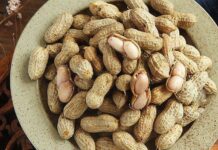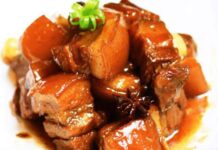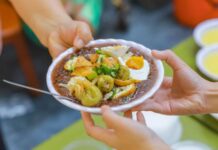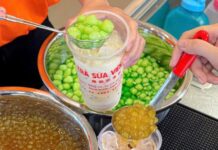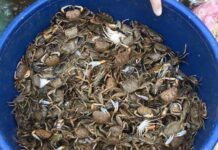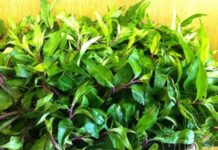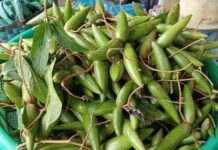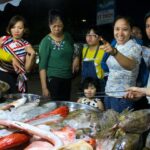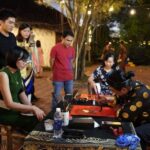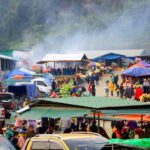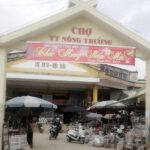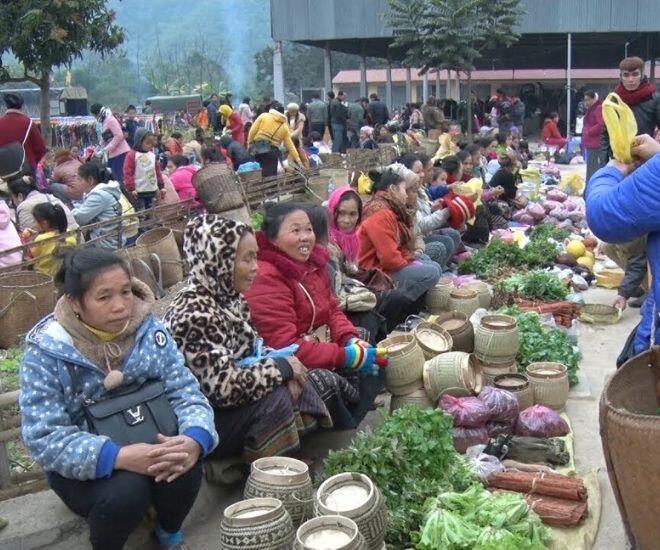
Na Meo Market, located just 300 meters from the Nam Meo International Border Gate and the Vietnam-Laos border marker, is more than just a marketplace; it’s a cultural hub and a tourist attraction. Every Saturday, the market comes alive with locals and visitors alike, offering a unique opportunity to immerse themselves in the vibrant border culture and capture memorable moments at the border marker.
From a Small Market to a Cultural Melting Pot
Na Meo Market has come a long way since its humble beginnings in the late 1980s as a small gathering for the local Thai and Hmong ethnic groups to trade goods. In 1999, the local government stepped in to redevelop and upgrade the market, making it more permanent and cleaner. Then, in 2004, with the upgrade of the Na Meo Border Gate to an international border, the market flourished. Trade increased significantly, and the variety of goods on offer expanded.
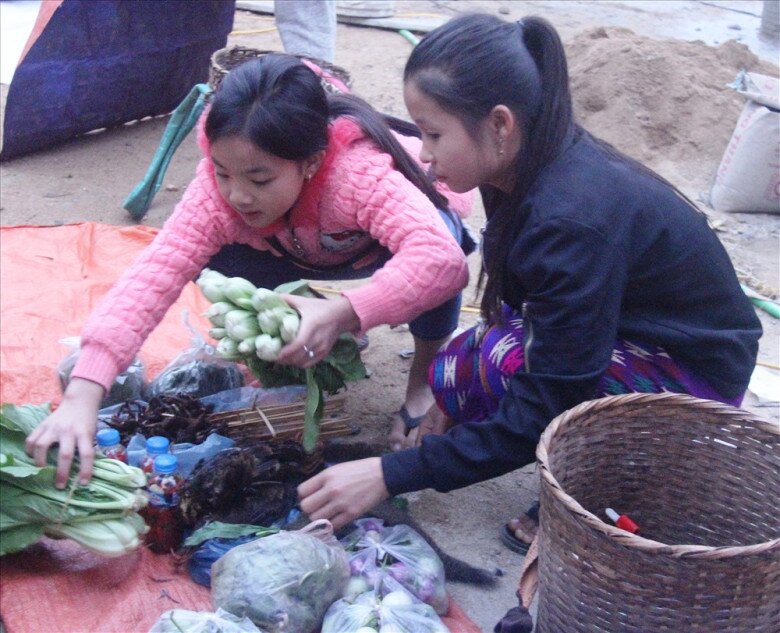
Today, Na Meo Market serves as a unique trading hub between Quan Son District in Thanh Hoa Province, Vietnam, and Vieng Xay District in Hua Phan Province, Laos. It is also a cultural exchange platform, strengthening the friendship and solidarity between the two nations. The market brings together Vietnamese and Laotians, not just for trade but also for social connections and camaraderie.
A Peaceful Market Rich in Cultural Heritage
One of the distinctive features of Na Meo Market is its peaceful and relaxed atmosphere. Despite only operating once a week on Saturdays, there is no pushing or haggling. Sellers don’t overcharge, and buyers don’t bargain. Transactions are friendly and pleasant.
The market primarily offers local produce and goods, most of which are grown or made by the local community. The goods from the two sides of the border are quite distinct: Laotians often sell forest vegetables, stream fish, sticky rice, dried bamboo shoots, dried beef, dried roasted rats, and grilled fish… While the Vietnamese side mainly offers household items, shoes, cosmetics, and clothing.
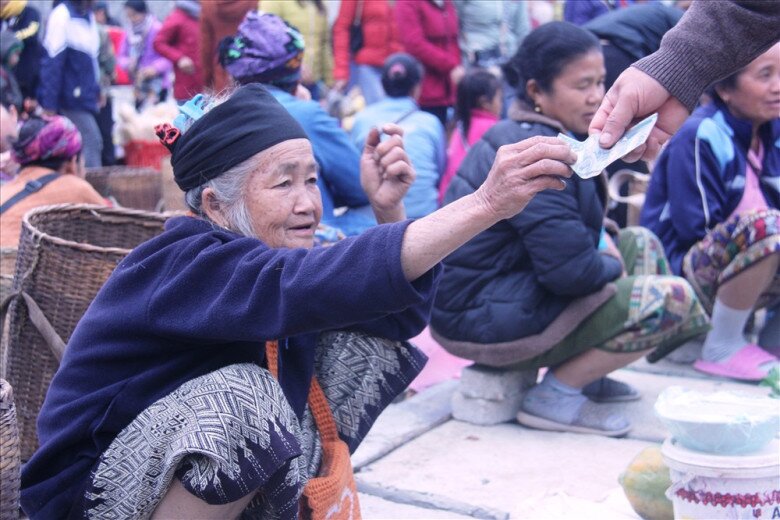
A special attraction of the market is the handicrafts made by Thai and Laotian women, especially around the Lunar New Year. Brightly colored fabrics, hand-woven mats, bags, and headscarves, all crafted by hand, showcase the rich cultural heritage of the region. The market also offers unique breakfast options, such as Lao pho (noodle soup) and sticky rice, enticing visitors with their delicious aromas.
Na Meo Market is a vibrant cultural melting pot. Many Laotians speak Vietnamese, and some Vietnamese know a little Lao, making communication and bargaining easier. For tourists, language is not a significant barrier, as there are always friendly locals willing to lend a hand with translation. Even without a common language, trading can take place through gestures, eye contact, and a warm smile.
Another unique aspect of the market is the use of two currencies: the Vietnamese dong and the Lao kip. This flexibility in payment options makes cross-border trading much more convenient.
A Must-Visit Destination for Travelers
Na Meo Market is not just a trading hub; it’s also a unique tourist destination offering an authentic highland experience. Visitors to Quan Son often combine their trip to the market with visits to Bo Cung Cave, Xia waterfall, and homestays in villages like Ngam. They can then immerse themselves in the lively market atmosphere the next morning.
On Friday afternoons, ethnic Mong and Thai people from remote villages start their journey downhill, carrying their goods to the market for the next day. As dawn breaks on Saturday, groups of Laotians cross the border, completing the necessary procedures to attend the market. The atmosphere is lively yet orderly and friendly.
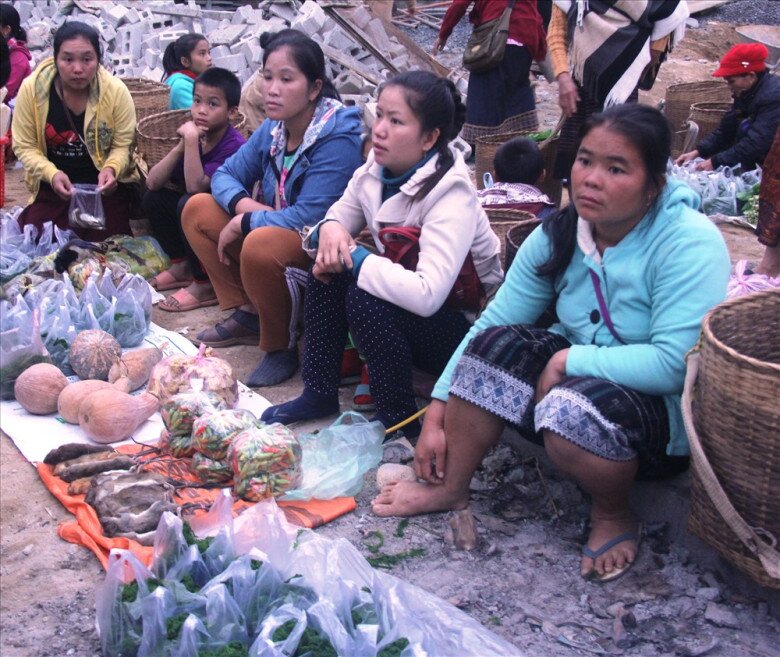
One of the market’s greatest strengths is its commitment to sustainability and wildlife protection. No wild animals, rare birds, or endangered species are traded here. This is thanks to the effective propaganda, regular inspections, and joint efforts of the authorities and functional forces of the two countries. As a result, the market preserves its cultural authenticity without compromising the natural environment.
In the early morning mist of the mountains, groups of people walk amidst laughter and conversation, their stalls filled with local produce. Na Meo Market is a symphony of simplicity and human warmth. Despite being a border market that operates only once a week, it stands as a testament to the traditional friendship and special solidarity between Vietnam and Laos. In an age of technology and supermarkets, this small border market shines as a beacon of community, culture, and kindness. It is not just a market but a way of life, a breath of fresh air, and a sacred bond between the people of the Vietnam-Laos borderlands.
“An Early Morning Seafood Extravaganza: Exploring the Bustling Night Market of Ly Son Island”
The island offers a unique and captivating experience: a visit to the nocturnal fish market, offering an authentic insight into the lives of local fishermen. Here, visitors not only witness the vibrant trade of freshly caught seafood but also immerse themselves in the lively and humble atmosphere of the market, a true reflection of the local fishing community’s way of life.
The Rural Market Amidst Ninh Binh’s Nature Reserve: A Trove of Unique Folk Experiences
Returning to Ninh Binh, most people immediately think of famous scenic spots such as Trang An, Tam Coc, and Bich Dong. However, not far from the center, at the Van Long Nature Reserve (Gia Van commune, Gia Vien district), a unique market called “My Village’s Countryside Market” is increasingly attracting the attention of tourists from all over.
The Hidden Marketplace in Yen Bai: A Unique Shopping Experience with Exotic Mountain Delights
Nestled approximately 70 kilometers west of Yen Bai City, the Binh Thuan Market in Binh Thuan Commune, Van Chan District, is more than just a hub for trading goods. It is a vibrant cultural space where Tay and Kinh cultures intertwine, painting a colorful portrait of life in the northwestern highlands.
The Plateau’s Marketplace Charm: How Moc Chau’s 60-Year-Old Tradition Endures with its Unique Offerings.
Nestled in the Moc Chau Highlands of Son La Province, the Town Farm Market has retained its authentic charm for over 60 years. This market, with its rich history and unique cultural offerings, has become a beloved destination for locals and visitors alike. The market boasts a diverse range of highland specialties and a distinct food culture that has remained unchanged since its inception.













